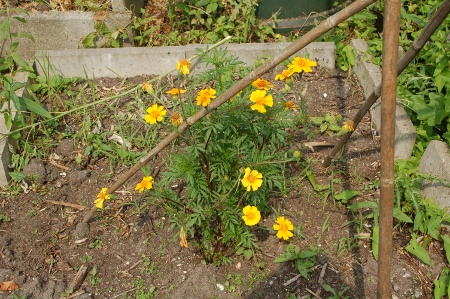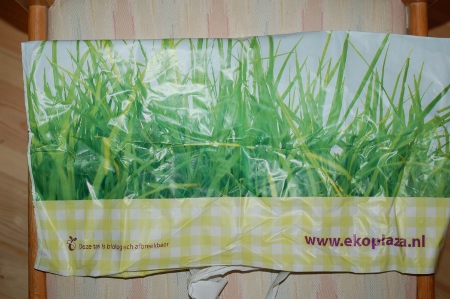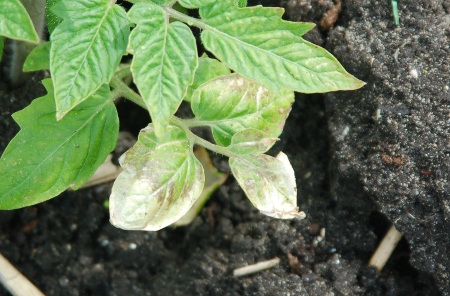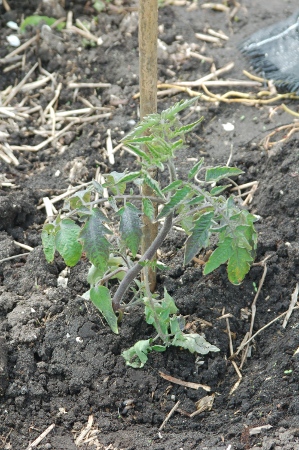I’ve been interested for a while in finding ways to make use of flowers to increase the biodiversity in my vegetable garden. To be honest, I’m a complete novice when it comes to flowers, and I don’t really have an interest in them unless they serve some clear purpose.
Some years ago, when the Seed Ambassadors visited Europe, I got some of Alan Kapuler’s tagetes seeds from them. As I recall, there weren’t many seeds left by the time it was my turn to take some, and of the few seeds I got only one or two germinated. I don’t remember what happened to those…
Alan Kapuler is known for tagetes. When placing an order with him a few years ago for some other things, I also ordered some more of these too. They’ve been sitting around, and now this year I had a couple of goals to accomplish.
- The first was to provide some flowers suitable for bees and other pollinators to collect pollen, and for this I chose borage.
- I also have some perennial weed issues in my garden, and I was hoping to address this by somehow solving underlying problems, or with companion planting or biodiversity.
Last year I had some bindweed in my garden, slowly encroaching on a neighbor’s garden. With some apologies, I explained the situation to her and said I would do what I could, but expected some of it would come into her garden anyway. Without saying a word to me, she planted some Tagetes minuta, a wild plant in our area, along our fence. The result was quite impressive. All the bindweed within about a meter of the fence died.
I’ve since read some things about using tagetes to kill bindweed, but to be honest the information available is a little conflicting and vague. Some sources say particular species of tagetes are more effective than others. Almost all sources mention that no benefit is achieved until the plant has been growing in the same place for at least 3 months. Anyway, it seemed a good year to grow some of Alan Kapuler’s varieties and put them to the test. He offers T. patula and T. erecta. Several of them were planted in places very infested with bindweed.
T. patula
T. erecta
Borage
The tagetes haven’t been in place for a full 3 months yet, so it’s probably a little early for conclusions, but not much seems to be happening yet. I did notice none of the tagetes are becoming engulfed in the bindweed, as if the bindweed instinctively knows not to grow near them.
Does anyone have any experience with tagetes and bindweed or tagetes and anything else?
Does anyone have other suggestions or ideas for combining flowers and vegetable gardens, for purposes of making use of biodiversity?

















